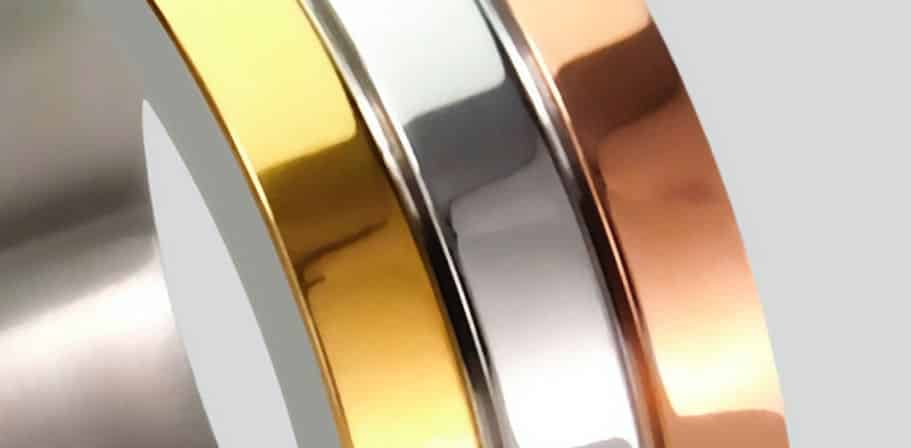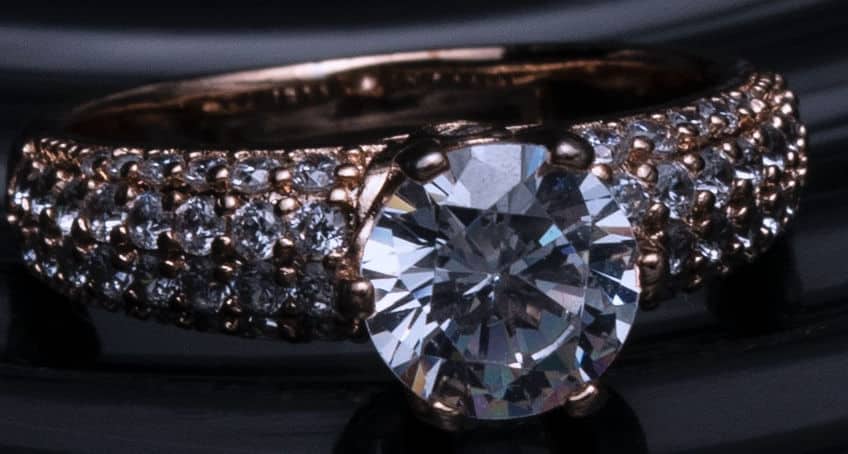Rings are worn on the fingers as ornamental jewelries or as symbols of status (e.g. societal status, marital status etc.). There are various kinds of rings – wedding ring, engagement ring, pre-engagement ring, birthstone ring, religious rings (ecclesiastical ring, aqiq ring, rosary ring, etc.), sports ring, academic ring, mood ring, etc. – and these ring types are made from different materials. The materials from which these rings are made, to a large extent determine the value of the ring. For instance, an engagement ring made with gold and mounted with a diamond stone is of far higher value than a pre-engagement ring made from just platinum.
Rings are mostly made from metals such as gold, palladium, platinum, silver, steel, titanium, tungsten, and zirconium, they are sometimes made from ceramics, exotic woods, etc. Ring are sometimes made in combination with gemstones. These materials are valued differently based on rarity, durability, quality and other factors.
Explained below is how to tell the value of a ring based on the materials it was made from.

METAL
One way of telling the value of a ring is by telling the value of the metal it was forged from. Gold, to a lay man, is the most precious metals and by extension the most valued precious metals; this is not true as there are more valued precious stones like rhodium and platinum. Below is the value of the various kinds of metallic rings:
- Gold rings: Like diamonds, the purity of gold is measured in carats. 100% pure gold is 24 carats. This means gold of 12 carats, 14 carats and 18 carats are 50%, 58% and 75% pure respectively. Although, 100% pure gold is soft and is not advisable for use as ring, the higher the carats the more valuable the gold ring is. Apart from reducing the price of the ring, gold is alloyed to create new color and also to give strength to the ring. Gold can exist in different colors depending on the metal it is alloyed with, for instance gold alloyed with copper, zinc and silver may be yellow, peach or pink in color depending the ratio of the alloys used. As a general rule, gold of higher carats are often of yellow color due to the lower quantity of added metal. This means to a large extent that yellow gold has a higher value than a gold peach or pink in color.
- Platinum rings: Platinum is one of the most expensive precious metal- it is more expensive than gold, this is because of its density, rarity and purity. Rings made from platinum are rare and as such carry higher value than those made from its metal counterparts.
- Palladium rings: Palladium is a rarer metal than gold. It is also less dense and more malleable and more durable than gold, rings made from it are valued less than those made from gold because of the societal significance placed on gold.
- Silver rings: In this category of precious metals, silver is the least valued; this is due to its commonness.
After considering the metal the ring was made from, another way of ascertaining its value is by considering the following:
- Color: this is a very important factor used in determining the value of your ring. This is because colors deviating from the natural color of a precious metal may indicate the presence of another metal which means lesser value.
- Pure or alloyed: alloyed metals are generally of less value.
- Pure, plated or filled: In some so-called precious metal rings, the metallic parts are not made from 100% pure precious metals. They are sometimes made from a base metal like brass, aluminum, steel etc., and plated or overlaid with a precious metal; these plated rings are far less valuable compared to the pure ones. Filled metal on the other hand involves creating a thick layer of precious metal over a base metal. Filled metal rings are more valuable than those of plated metal but are generally of a lesser value compared to a ring made of pure metal.
- Precious or not: precious metals which are basically 8 in number are generally of a higher value than non-precious metals. The precious metals in their order of value are:
- Rhodium
- Palladium
- Gold
- Ruthenium
- Iridium
- Osmium
- Palladium
- Silver

THE CENTER STONE (if any)
Some metallic rings have gemstones attached to them; these gemstones further affect the value of the rings. After checking out for the value of the metal from which a ring with a center stone is made the following should also be look out for in valuing the ring:
- The gemstone: the gemstone mounted on a ring generally affects the value of the piece. Typically, precious stones hold higher values than other kinds of stones. Rings mounted with diamond, ruby or emerald is most like of a higher value than those mounted with a black opal. Diamond is the most valued gemstone in the world.
- The type of gemstone: is the gemstone natural, synthetic or an imitation? Real gemstones which may be natural or synthetic are far more valuable than simulants (imitated gemstones).
- The size of the gemstone: how big is the gemstone? The bigger the mounted gemstone the higher the value.
- The quality of the gemstone: gemstones generally are graded based on their, color, cut, clarity, and carat weight. How pure, strong and rich is the color of the gemstone? How much of inclusions (impurities) does the gemstone have? Gemstones with more inclusions are generally valued lesser. Is the gemstone fractured? How many carats of the particular gemstone is your piece- how pure is your gemstone? These qualities go a long way in determining the value of the ring.
Other qualities through which the value of a ring may be determined:
- Age of the ring: is the ring vintage, antique or estate. Antique and vintage rings are very old rings; an antique ring may be as old as 100years. Antique rings and vintage hold higher values than estate rings.
- Designer (brand recognition): rings made from recognized brands are of higher values than those of not-so-recognized brands.
SUMMARY
The value of a ring can be known through the value of the materials from which it was forged- the metal and the gemstone (if any). Also, a ring can be valued from its age and brand recognition of the designer.
